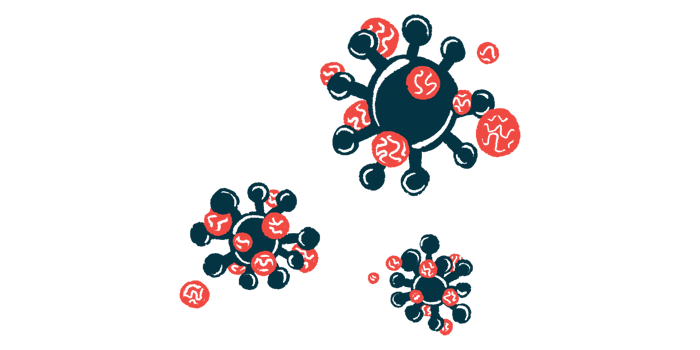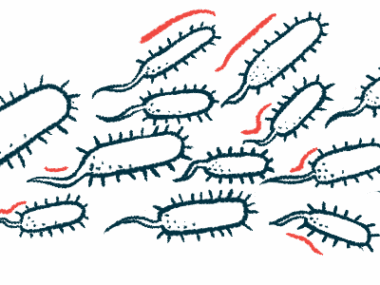Epstein-Barr virus infection leads to secondary CAD in girl
Researchers recommend AIHA patients be evaluated for EBV
Written by |

A 12-year-old girl in Italy developed cold agglutinin disease (CAD) as a result of an infection with the Epstein-Barr virus (EBV), the virus that causes infectious mononucleosis, a case study reported.
Treatment with the corticosteroid methylprednisolone and intravenous immunoglobin (IVIG) progressively led to complete resolution of her CAD symptoms. Corticosteroids are a type of anti-inflammatory and immunosuppressive medication, while IVIG delivers healthy antibodies to neutralize the self-reactive antibodies that drive autoimmune diseases like CAD.
A literature review showed that pediatric cases of autoimmune hemolytic anemia (AIHA) — a group of rare autoimmune conditions that include CAD — secondary to EBV infection are rare, but most of such cases reported have been of the CAD type.
“Patients with autoimmune hemolytic anemia should always be evaluated for EBV …, even in the absence of the typical clinical and [blood-related] features of infectious mononucleosis,” the researchers wrote. “For these patients, good prognosis is generally expected.”
The case, “Epstein-Barr virus-associated autoimmune hemolytic anemia: a clinical report and review of literature,” was published in the Italian Journal of Pediatrics.
Primary vs secondary CAD
In AIHA, self-reactive antibodies wrongly bind to red blood cells, marking them for destruction in a process known as hemolysis. This results in hemolytic anemia, when there are too few healthy red blood cells to carry oxygen in the body.
The disease can be classified as warm AIHA, CAD, or mixed AIHA, depending on whether the antibodies attach to red blood cells at warm or cold temperatures or a combination of both.
CAD and the other forms of AIHA can be classified as primary, when the cause is unknown, or secondary, when it occurs due to other conditions, like infections.
EBV infection “is a common disease both in children and adults” that can lead to complications including liver problems in some patients, the researchers wrote. However, they added, “autoimmune hemolytic anemia is rarely seen” secondary to EBV infection.
During EBV infection, cold agglutinins, the self-reactive antibodies that cause CAD, “may develop in up to 60% of patients, but only 0.5-3% of them, because of high [levels of self-reactive antibodies], evolve into clinically significant hemolysis,” the researchers wrote.
The team described the case of a 12-year-old girl who developed CAD secondary to an EBV infection.
The girl was admitted to a children’s hospital in Palermo, Italy, with jaundice (yellowing of the skin and the whites of the eyes) and dark urine, which can be signs of excessive hemolysis and/or of liver damage. She was vomiting and had diarrhea, joint pain, and difficulty urinating.
Blood tests showed low levels of hemoglobin, the protein that carries oxygen in red blood cells, and elevated levels of bilirubin and lactate dehydrogenase, two hemolysis markers. She also had elevated levels of liver enzymes, indicative of liver damage.
The girl was hospitalized with a suspicion of hemolytic anemia. By the next day, her hemoglobin levels had further dropped, while the levels of reticulocytes (immature red blood cells) were elevated, further indicating excessive hemolysis.
Testing detected antibodies produced in response to EBV infection, as well as cold agglutinins bound to certain immune proteins implicated in CAD, leading to a diagnosis of CAD secondary to EBV infection.
The girl was first treated with the corticosteroid methylprednisolone, given directly into the bloodstream, and after two days, she was also started on IVIG. A few days later, her condition eased, with an increase in hemoglobin and a decrease in reticulocyte, bilirubin, and LDH levels.
She was discharged after eight days of hospitalization, on oral methylprednisolone that was gradually reduced at home.
EBV-related AIHA cases rare
The researchers systematically reviewed pediatric cases of AIHA secondary to EBV infection published in English, which yielded a total of 16 cases, including the girl from their study.
Patients had a mean age of 12.7 (range 9 months to 18 years), and 53% were girls. Most cases were of CAD (76%), and the most frequently reported symptoms included jaundice (76%), fever (65%), malaise and fatigue (41%), and dark urine (29%).
All children were hospitalized, and while CAD typically does not respond well to corticosteroids, 70% of the patients received this type of treatment. Two patients (14%) received IVIG, and two (14%) needed plasmapheresis, a blood-cleaning procedure that can remove antibodies and other proteins involved in autoimmune attacks.
Rituximab, a therapy that kills antibody-producing immune cells and that is commonly used off label for CAD, was used in one case (6%).
“EBV-related AIHA is a rare condition, involving generally adolescent patients,” the researchers wrote. “Jaundice represents the main sign: it may depend on the association between hemolytic anemia and [liver problems], which is the most common complication.”
While “signs and symptoms of infectious mononucleosis may be absent, diagnostic test for acute EBV infection is always required, especially in case of hemolysis with cold agglutinin,” the team concluded.







